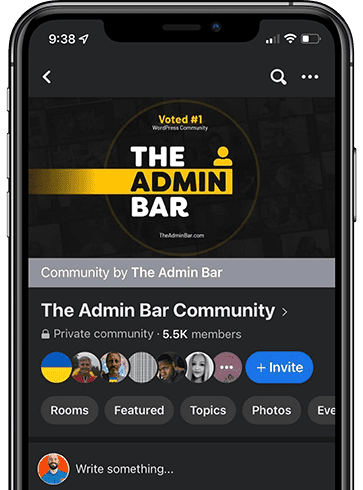Setting Up & Accessing Accounts for Clients is a Pain
Through the process of developing websites or doing any kind of digital marketing for clients, chances are you’re going to need to set up some 3rd party accounts on their behalf.
This could be their hosting, DNS provider, analytics, or any number of services that require a unique login.
Of course you could just put in your customer’s real email address, but most of these accounts require a verification process… And if your clients are anything like mine, then good luck getting them to do that in a timely manner!
I’ve tried solving this problem several ways — including setting up a free Gmail account for my clients properties — but all of them seemed like a bandaid rather than a solution.
That is, until I tried setting up what I call a “burner email address”.
In this article I’m going to explain to you why you might want to use the burner email address option, when it’s useful, and exactly how you can get started with a pennies-per-day investment — so let’s get started!
What’s the Purpose of Burner Email Address?
When setting up accounts for clients, it’s important that they have ownership of their accounts.
If you and your client part ways, it makes for a clean break and it keeps your client from feeling like you control too much of their online presence. Many web developers prefer not to be the middleman in these situations because of the headaches they can cause down the road (and should you really be responsible for remembering all your clients various logins? No way!).
But if you’ve ever asked a client to go set up an account themselves, you know what a pain this can be (if it ever gets done).
The purpose of a burner email address is to create a unique inbox that both you and your client can access in order to make setting up their own accounts easy without having to slow down your process to wait on a busy client.
This gives you the ability to set up accounts on their behalf (without having to bug them for email confirmations), while also creating a transparent process where your client can access the account and inbox too.
Once accounts are set up, and your work is done, your client can access their accounts and transfer them to their own personal email address.
Of course, few of my clients ever bother transferring accounts to their own email — but since the cost of these burner accounts is completely negligible (more on that in a moment), I don’t mind them continuing to use it for these accounts so long as they are a current client (typically those who are on a care plan).
How to Set Up a Burner Email Address
Though I’ve tried several ways (including free Gmail accounts, aliases in my Google Workspace account, etc.) the best solution I’ve come up with is using a cheap cPanel web hosting account.
Many of these budget accounts come with unlimited email addresses and cost only a few dollars per month.
I can’t help but mention here, I would not recommend cPanel email accounts for any real or important use. These systems have a bad reputation for emails not being delivered or ended up in spam. But for account setup and verification purposes they work just find.
Just Google “cheap hosting” and you’ll find a million of them — and honestly, it doesn’t matter what you pick so long as they use cPanel and offer unlimited email addresses. If you don’t want to do the digging yourself, NameHero seems to be popular among our community.
Personally, I’m using a Host Gator account I setup when I built my first WordPress website — since I already had the account, it was just convenient to not have to go and create a new one. As I said, it really doesn’t matter where you get the account — they all work about the same.
Once you’ve connected a domain to your cPanel account (which they will guide you through in the onboarding process), setting up an inbox is as simple as picking an email address and setting a password.
If you’ve not done this before, this video from HostGator will walk you through the process, which is very similar no matter which hosting provider you choose (so long as they are using cPanel).
Most cPanels will give you the ability to limit the storage space of the email account, which I recommend you do. These burner accounts aren’t meant to be used for any person-to-person interaction, so there’s no reason they should be using gigabytes of storage space.
Burner Address Domain
When it comes to setting up the domain you’re going to use for your burner email addresses, you have a couple of choices.
You could purchase a unique domain for these email addresses, which will cost you a few dollars to register the domain and then a renewal fee each year.
For me, I don’t mind the few dollars it costs me per month for this domain — and it keeps all my DNS records nice and tidy.
However, if you’re on a budget, you could set up your burner domain as a subdomain of a property you already own (like your agency’s domain).
This method won’t require any additional expenses beyond your cPanel hosting account and will work just the same. The reason I don’t do it this way is that setting up the email addresses requires adding MX records to your domain and I just rather keep those away from any of my day-to-day domains.
Either way you go, you can set up an easy to remember system for assigning each client their own inbox.
I use the formula of ClientCompanyName @ BurnerDomain . tld. So, for instance, if my burner domain was MyAgencyEmails.com, and my client was Acme Ltd., their burner account would be [email protected].
Using a repeatable formula makes it easy to create email addresses on the fly and remember what you likely used to set up their account.
Why not use a free email service like Yahoo, Gmail, or Hotmail?
Yes, you absolutely could do this same thing with the various free email providers out there. But in my experience you’ll run into a couple of issues:
- These accounts typically also require verification (most often your phone number). This adds another layer of complexity to things as you have someone’s phone number for verification, which defeats the entire purpose of setting up their accounts on their behalf.
- You’re much more likely to get spam that fills in the inbox. I’m not sure how they do it, but spammers are much more likely to find these types of burner accounts and fill your inbox with junk that just gets in the way.
- It’s more professional. You’ll have to explain to your client that you’ve setup an email for their accounts, and when it’s a branded domain it just looks so much more professional (like you actually have a system for this!) than it does with an obvious free email service.
As with most things (especially in tech) there are many ways you can go about doing something similar — but for me a couple dollars per month is well worth having a place to keep ALL of my clients in one space that I can completely manage.
And just in case you have the same bright idea I had (of using your aliases inside your Google Workspace account), keep in mind that those email addresses don’t come with their own inbox — so you lose the ability to share the login with your client (unless you want to give them access to your email (you don’t!)).
Recap
Setting up a burner email address is a quick, easy, cheap, and transparent way to avoid the hassle of having to involve your clients in setting up all the 3rd party accounts that might be necessary to carry out your website development and marketing duties.
For just pennies a day, you can set up a cPanel web hosting account that comes with unlimited email addresses and add new inboxes on the fly in a matter of minutes. If you want to take it to the next level, purchase a domain specifically for this purpose — or save a few bucks by just using a subdomain of a domain you already own.
Since both you and your clients will have access to the burner address, they can easily login to their accounts and swap out the primary email address to their own once you’re done setting it up (though that’s not always necessary).
This system reduces the friction and time involved setting up accounts for your clients.





